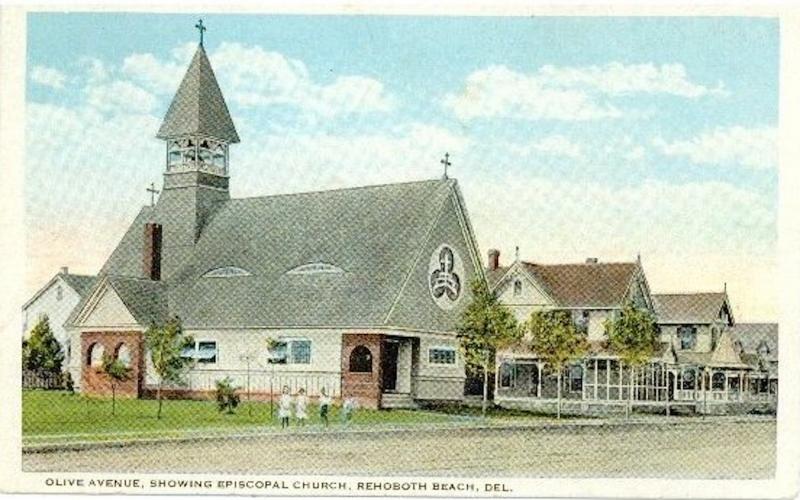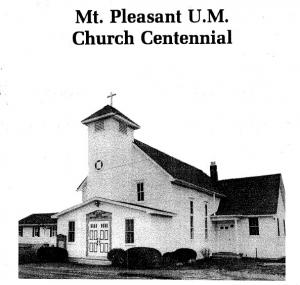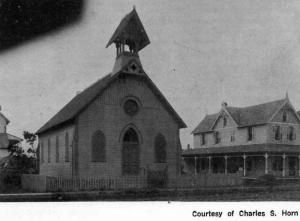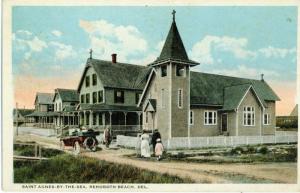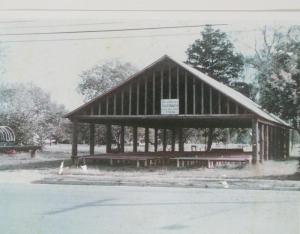From its original beginnings to its name, Rehoboth Beach has a long religious history. A two-part series by the Rehoboth Beach Museum is exploring that history through the different congregations that have called the city home since it was founded in the early 1870s.
The first part of the series took place Aug. 27 through Zoom. Paula Roberts, exhibit manager at the museum for the past five years, discussed a period of time from the founding of Rehoboth as a Methodist Camp Meeting Association by the Rev. Robert W. Todd to 1940, when other congregations had developed throughout the city.
Rehoboth Beach was officially given status as a municipality by the state’s General Assembly in 1891. Roberts said one of the first ordinances passed by the city stated there was no alcohol allowed within one mile of the tabernacle, which was located in what is now The Grove park.
“You won’t be surprised to learn the town line for Dewey Beach is one-mile-and-seven-feet from the tabernacle,” said Roberts.
Roberts said the camp meeting concept lasted for roughly a decade in Rehoboth, slowly petering out. Soon after, though, other churches and congregations began coming to town. Roberts said campers, often separated by gender and race, came to Rehoboth to pray, sing and listen to fiery sermons.
Roberts' presentation included information on Epworth United Methodist Church, Faith United Methodist Church, The Episcopal Parish of All Saints’ Church and St. George's Chapel, and Saint Agnes by the Sea and Saint Edmond Catholic Church.
For example, Epworth was built in 1897, but then moved to Baltimore Avenue in 1914; Saint Agnes by the Sea was located where Star of the Sea Condominium now is; Faith UMC was primarily a church for the area’s Black residents that was incorporated in 1899.
Roberts said throughout the early years, officials cited the city’s religious roots for reasons to try to impose what now seem like silly limitations. For example, she said, shirts were required for men, and women were banned from wearing bikinis.
It was a time when men wore suits and women wore dresses in public, said Roberts. Things have changed, and Roberts said she’s reminded of that every time she takes a walk on the Boardwalk.
Rehoboth was a place for priests and pastors to vacation too, said Roberts. They would come for a couple of weeks, stay at a congregation member’s house and perform their religious duties while here, she said.
The two-part series is serving as a preview of an exhibit scheduled to be held at the museum during the summer of 2021. The exhibit had been scheduled to show this summer, but COVID-19 changed all that.
“Next summer, God willing, we’ll all be able to see it,” said Roberts.
The second discussion is scheduled for 2:30 p.m., Thursday, Sept. 17, and will cover faith traditions in Rehoboth Beach from 1940 to the present. The discussion will include Westminster Presbyterian Church, The Lutheran Church of Our Savior, The First Church of Christ, Scientist, Seaside Jewish Community and the Metropolitan Community Church.
For more information, go to www.rehobothbeachmuseum.org, email rbmuseumactivities@gmail.com or call 302-227-7310. The museum, 511 Rehoboth Ave., is currently closed to the public.
Chris Flood has been working for the Cape Gazette since early 2014. He currently covers Rehoboth Beach and Henlopen Acres, but has also covered Dewey Beach and the state government. He covers environmental stories, business stories and random stories on subjects he finds interesting, and he also writes a column called Choppin’ Wood that runs every other week. He’s a graduate of the University of Maine and the Landing School of Boat Building & Design.














